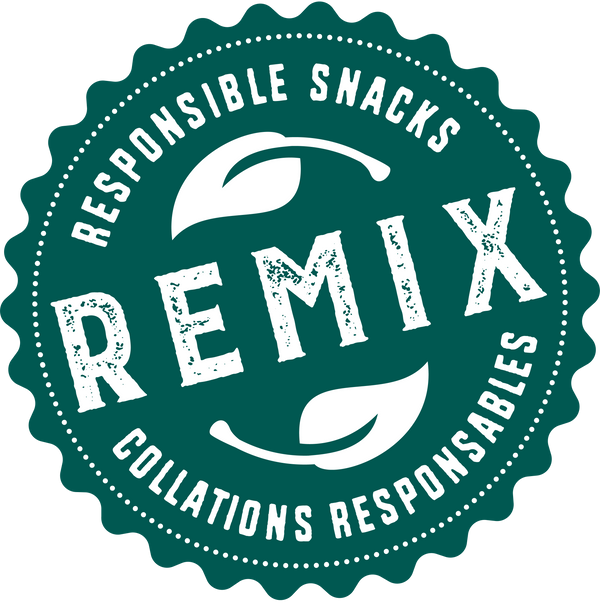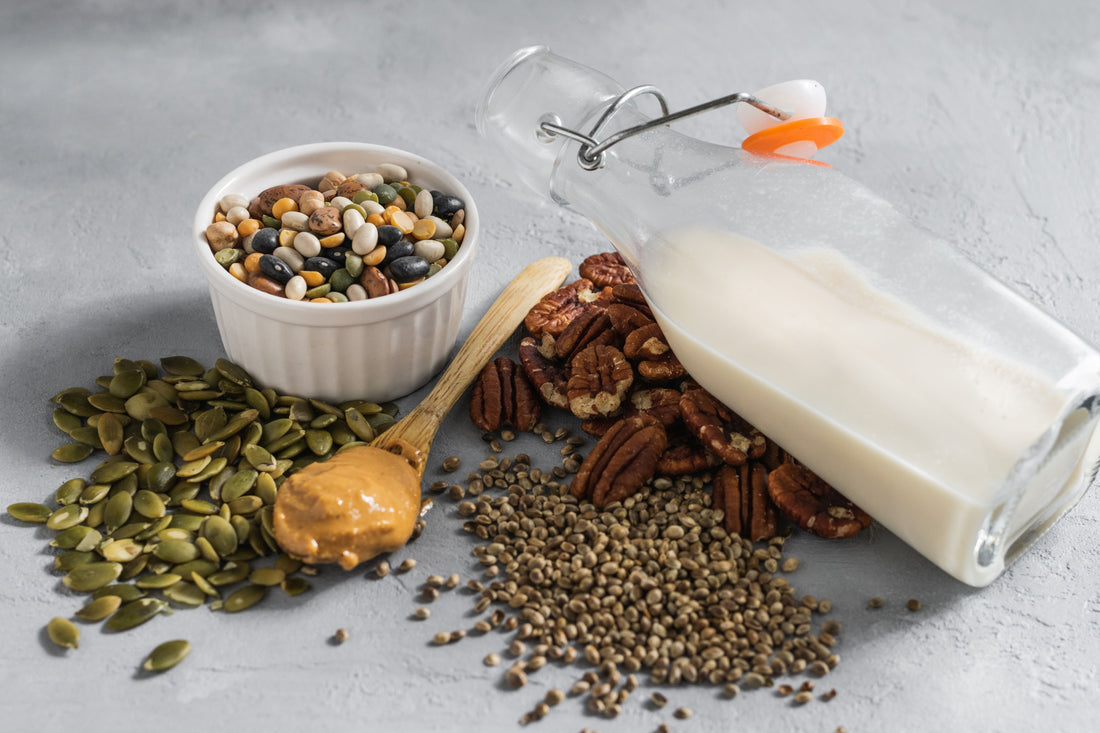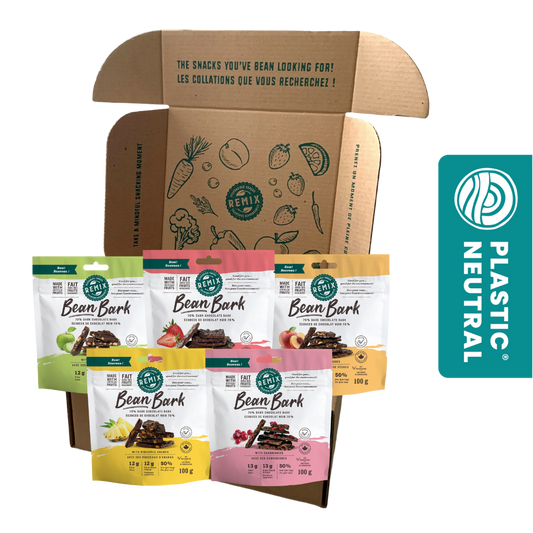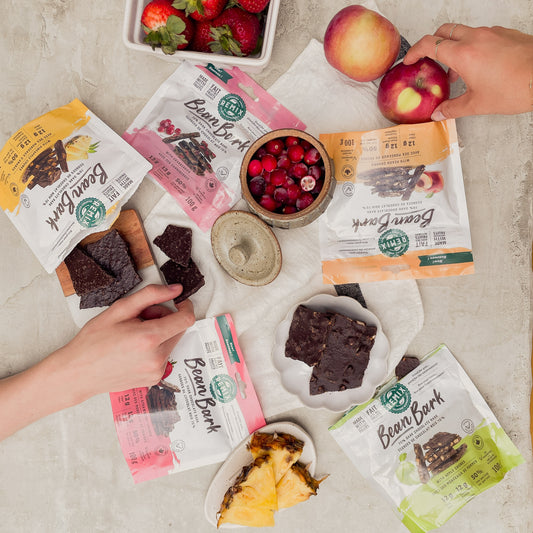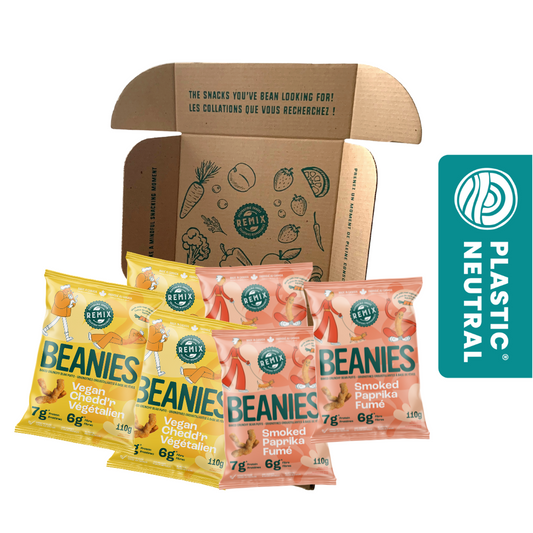Written by: Fannie Dancose, May 2020
It seems like everyone is talking about protein and we are seeing more and more products claiming a high protein content on their packaging. But what exactly is protein and why does it matter? Here are five things you should know about protein to help you make informed decisions about food you eat.
Protein is one of the three macro-nutrients essential to our life. Along with carbohydrates and lipids (or fats), proteins are needed so our bodies can function properly. Protein are made up of amino acids forming little chains that bend and twist on themselves to become active. There are 20 amino acids and their various combinations on chains form an almost infinite amount of proteins that you find everywhere in your body (blood cells, muscle, stomach, etc...), but also around you (plants, animals, food, etc…). Amino acids are classified into two categories: essential and non-essential. Essential amino acids cannot be built in our body, it is therefore essential to eat food that has them. Non-essential amino acids can be built in our bodies and are therefore non-essential to consume.
- Protein form our cells and organs and they also repair tissues and response to injuries.
- Protein allow the good performance of our biological functions. They are enzymes, hormones, antibodies, blood-clotting factors and many more. They help with digestion, immune response, oxygenation… In short, they are needed for pretty much everything in the body.
- Protein can serve as an energy source as some amino acids can be transformed into glucose (1).
Here is a list with a couple protein sources (2):
- Animal Sources
- Meat, fish, seafood, insects (!)
- Products like milk, cheese, and eggs
- Plant Sources
- Legumes, beans, lentils
- Grains like oats, corn and rice
- Nuts and seeds
- Products like tofu, tempeh, seitan, textured vegetable protein and soy beverage
It is also good to know that animal sources have complete proteins that have all the essential amino acids. Plant sources, on the other hand, have to be combined to ensure a sufficient intake of the essential amino acids. For example, grains like rice and legumes like beans complement themselves and give you all the amino acids you need.
For an adult, the official recommended dietary allowance is 0.8 g/kg per day. However, new studies support a higher recommended intake of 1.0 to 1.2 g/kg per day, especially for older adults (3). For athletes, it could be as high as 2.0 g/kg per day depending on the sport and the athlete (4).
So if you weigh 60 kg and you need 0.8 g/kg, it means you need 48 g of protein per day. That is:
- A bowl of oatmeal (28 g) with cow’s milk (½ cup) = 4.50 g + 5.31 g = 9.81 g
- Almonds (¼ cup) = 7.34 g
- Ham and cheese sandwich = 20.69 g
- Lentil stew (½ cup) with rice (½ cup) = 9.44 g + 2.66 g =12.1 g
- Total = 49.94 g of protein
It is best to divide your total protein intake throughout the day. That way, your body never lacks protein at some part of the day or has a surplus at another one. Also, protein has a great satiating effect and helps keep you feeling full for longer.
Also, a snack with proteins and carbohydrates is ideal for a good recovery within 15 to 30 minutes after a workout. Aim for a snack with 10g of protein with 30g of carbs like chocolate milk or peanut butter and banana sandwich.
Finally, make sure to look at the protein content on labels when you want to buy a product. A product with more than 6 g of protein per portion (5) is a great choice.
Did you know that Bean Bark contains 7g of protein per servings! This makes it a great choice as a protein packed snack! So click on order now to try it out for yourself and stay tuned for more informative blog posts.
References
-
Kent, M. (2016). Food and fitness: a dictionary of diet and exercise (2nd ed.). Oxford University Press.
-
Key, K. (Ed.). (2013). The gale encyclopedia of diets: a guide to health and nutrition (2nd ed.). Gale/Cengage Learning.
-
Lonnie, M., Hooker, E., Brunstrom, J. M., Corfe, B. M., Green, M. A., Watson, A. W., Williams, E. A., Stevenson, E. J., Penson, S., & Johnstone, A. M. (2018). Protein for Life: Review of Optimal Protein Intake, Sustainable Dietary Sources and the Effect on Appetite in Ageing Adults. Nutrients, 10(3), 360.
-
Position of the academy of nutrition and dietetics, dietitians of canada, and the american college of sports medicine: nutrition and athletic performance. (2017). Journal of the Academy of Nutrition and Dietetics, 116(3), 501–528.
-
Webb, D. (2015). High-Protein Snacking. Today's Dietitian. 17(6). p. 22.
